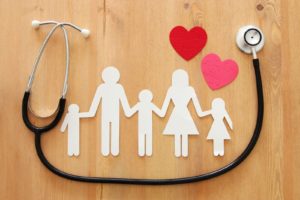Our faith leaders – pastors, priests and rabbis – are in a unique position to be the first line of defense when confronting mental illness. Speaking at the recent Pathways to Hope conference, Matthew S. Stanford, PhD and CEO, of Hope & Healing Center & Institute agreed, saying that people experiencing a mental health crisis are, “more likely to go to a clergy member before any other professional group.” Because of that, both Stanford and Austin Psychiatrist, Daniel Morehead MD, believe that religion and spirituality, can and should be part of a treatment plan (where appropriate) for those that struggle with mental health issues. What follows are some practical questions and responses about how that might work.
Does faith (or religion/spirituality) improve quality of life?
A 2012 Gallup survey shows religious Americans enjoy a higher sense of well-being. And a 2011 Gallup Healthways Well Being survey indicates that the number of daily positive emotions increase as church attendance increases whereas negative emotions increase as church attendance decreases.
How is faith important when treating mental illness?
Stanford says that faith leaders not only serve as the front door of the mental health system, but that religion and spirituality offer clients hope that transcends their circumstances. Additionally, faith organizations provide opportunities for therapeutic collaborations and communities of supportive care and/or relapse management. On a fundamental level, Stanford believes that clients that are spiritual and/or religious benefit further because they are able to find hope, identity, purpose, growth and community in the context of their experience.
When should faith be incorporated into treatment plans?
Morehead says that “Spirituality and religion should be used in two circumstances. First when they are scientifically proven to benefit physical and/or mental health. And secondly, when the patient/client wants it.” So it’s not one-size-fits-all. Stanford points out that Mental health professionals should not be “presenting a (spiritual) program for the patient to follow.” He also cautions clients saying, “A mental health professional is not a religious authority or a spiritual leader. Instead, they are a fellow explorer helping the patient/client finding their way forward.”
How can a treatment plan include religion or spirituality?
Morehead says that there are several ways to incorporate spiritual and religious activity as part of a therapeutic treatment plan . Some of those activities include attendance at religious services, meditation, prayer and quiet reading of scripture. 12-step groups like Alcoholics Anonymous are also examples of treatments with spiritual components.
How do spiritual and religious activities improve health?
Research has shown that religious and spiritual activities (like the ones mentioned above) can result in better outcomes in major depression, lower substance abuse, lower rates of suicide and higher levels of happiness. Greater life satisfaction and increased positive personality traits are also end-benefits of spiritual engagement.
The new research showing the benefits of religion and spirituality for people with mental health issues is encouraging news for everyone affected by mental illness – the faith community, mental health professionals and clients. For more information on Stanford’s and Morehead’s presentations or to see a video recording of them, please visit Pathways to Hope.










